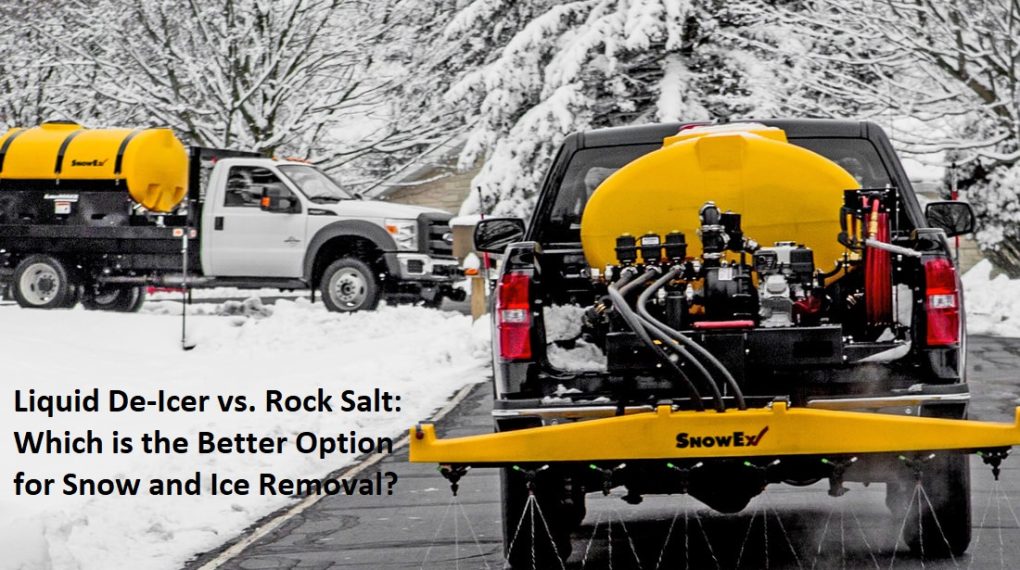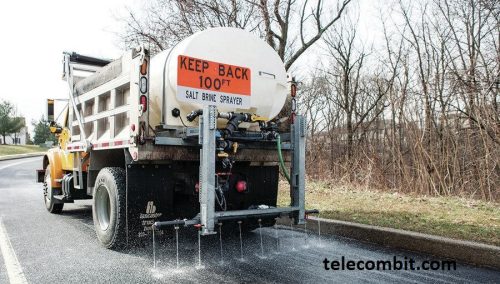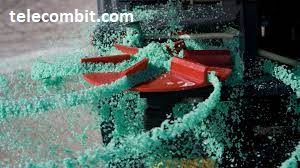Liquid De-Icer vs. Rock Salt: Which is the Better Option for Snow and Ice Removal?
As winter approaches, the need for effective snow and ice removal becomes crucial. While traditional rock salt has been the go-to choice for decades, liquid de-icers are gaining popularity. Both options have their merits, but understanding their differences and benefits is essential for making an informed decision. In this article, we will explore the advantages and disadvantages of liquid de-icers and rock salt, helping you determine which option is the better choice for your snow and ice removal needs.

Understanding Liquid De-Icers
Liquid de-icers are chemical solutions that are sprayed or applied to surfaces to melt snow and ice. They typically contain calcium magnesium acetate (CMA), potassium acetate, or magnesium chloride. Liquid de-icers are often used as preventive measures, applied before a snowstorm or freezing rain to prevent ice from forming or to enhance the effectiveness of subsequent snow removal efforts.
Rapid Action: One of the key advantages of liquid de-icers is their rapid action. As soon as the liquid is applied, it begins to melt snow and ice on contact. This quick response time allows for faster clearing of driveways, walkways, and roadways, reducing the risk of accidents and improving overall safety.
Lower Melting Point: Liquid de-icers generally have a lower melting point compared to rock salt. This means they can effectively melt ice at lower temperatures, even in extremely cold conditions. The ability to melt ice at lower temperatures increases their efficacy and provides better control over slippery surfaces.
Environmentally Friendly: Liquid de-icers are considered more environmentally friendly than rock salt. While rock salt can harm vegetation and corrode infrastructure, liquid de-icers have lower toxicity levels and reduce the overall environmental impact. Additionally, liquid de-icers require less material to achieve the desired results, further minimizing their ecological footprint.

Examining Rock Salt
Rock salt, or sodium chloride, has long been used as a de-icing agent due to its affordability and wide availability. However, it has certain drawbacks that should be taken into consideration.
Cost-Effective: Rock salt is relatively inexpensive compared to liquid de-icers, making it an attractive option for budget-conscious individuals or organizations. It provides a cost-effective solution for large-scale snow and ice removal projects.
Widely Available: Another advantage of rock salt is its widespread availability. It can be easily obtained from local hardware stores or suppliers, ensuring accessibility for homeowners and businesses alike.
Corrosive Properties: One of the main concerns with rock salt is its corrosive nature. It can damage concrete, metal surfaces, and vegetation over time. This may lead to costly repairs and environmental consequences in the long run.

Making the Right Choice
When deciding between liquid de-icers and rock salt for snow and ice removal, several factors need to be considered:
Temperature Range: If you frequently experience extremely low temperatures, liquid de-icers are the preferred choice. They have a lower melting point and can effectively melt ice even in sub-zero conditions.
Environmental Impact: Liquid de-icers are more environmentally friendly, making them suitable for areas where vegetation preservation and environmental impact are significant concerns.
Speed and Efficiency: For immediate results and rapid snow and ice removal, liquid de-icers offer quicker action and enhanced efficiency compared to rock salt.

Conclusion
In the battle between liquid de-icers and rock salt, there is no one-size-fits-all answer. The choice depends on various factors such as temperature range, budget, and environmental considerations. While liquid de-icers offer faster action, lower melting points, and reduced environmental impact, rock salt remains a cost-effective option that is widely available. Ultimately, understanding your specific needs and considering the advantages and disadvantages of each option will help you make the best decision for snow and ice removal.





